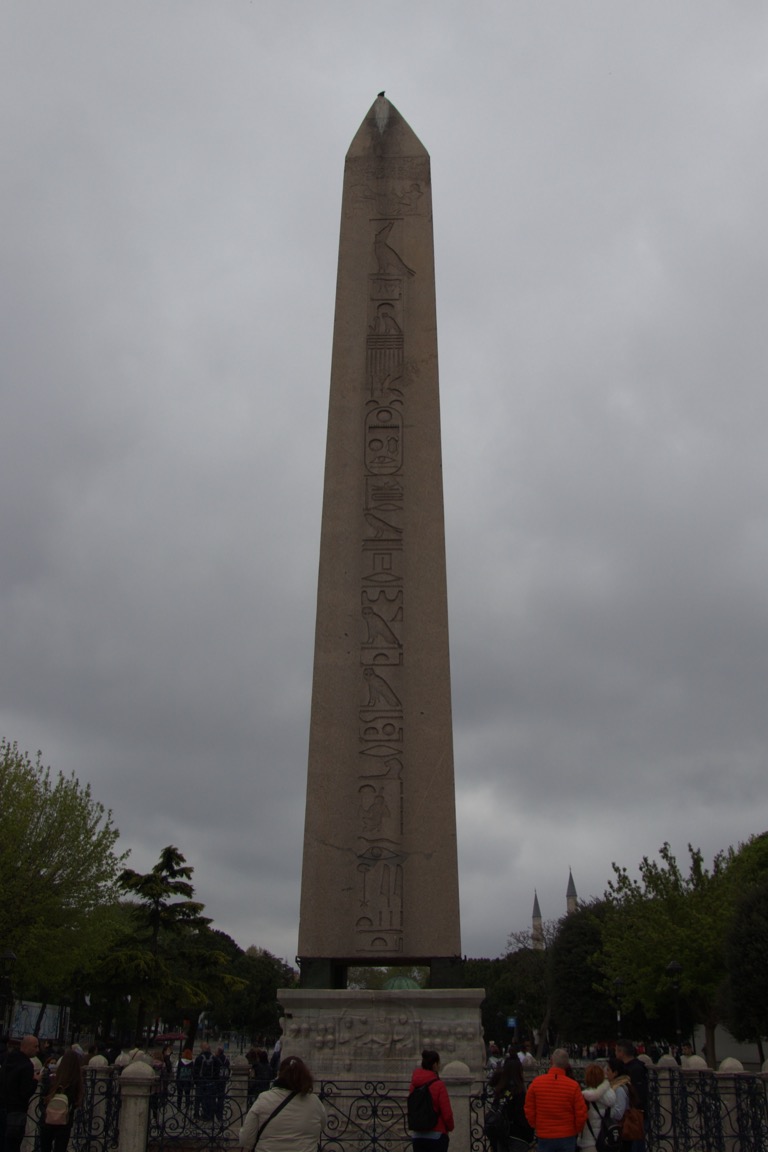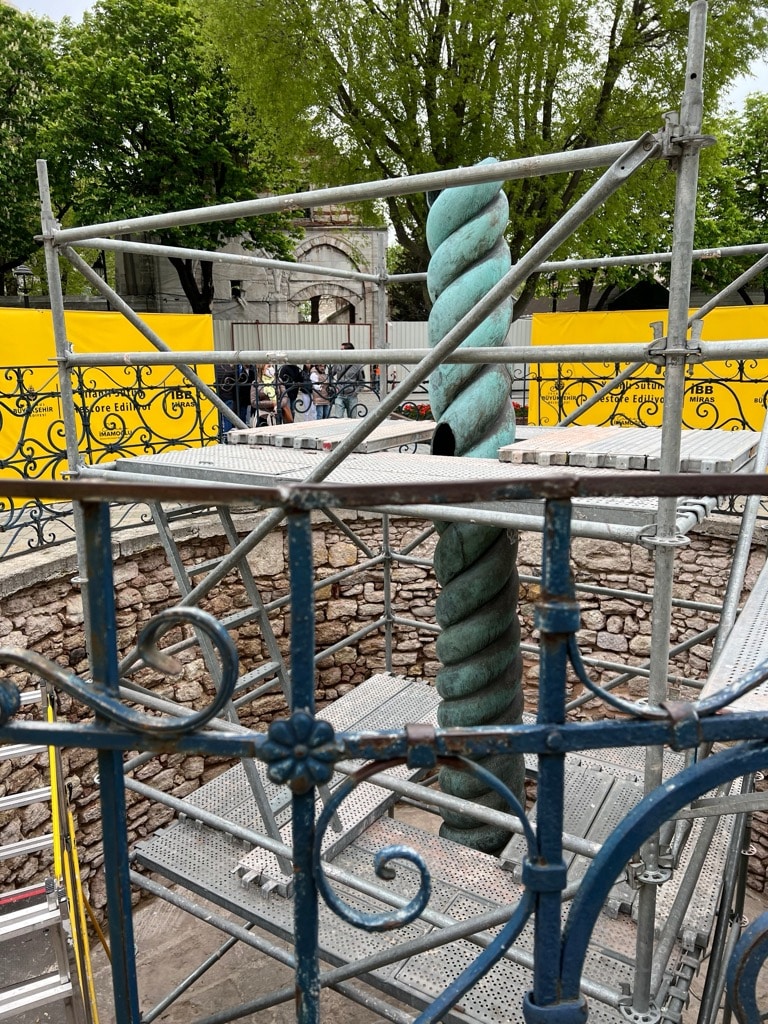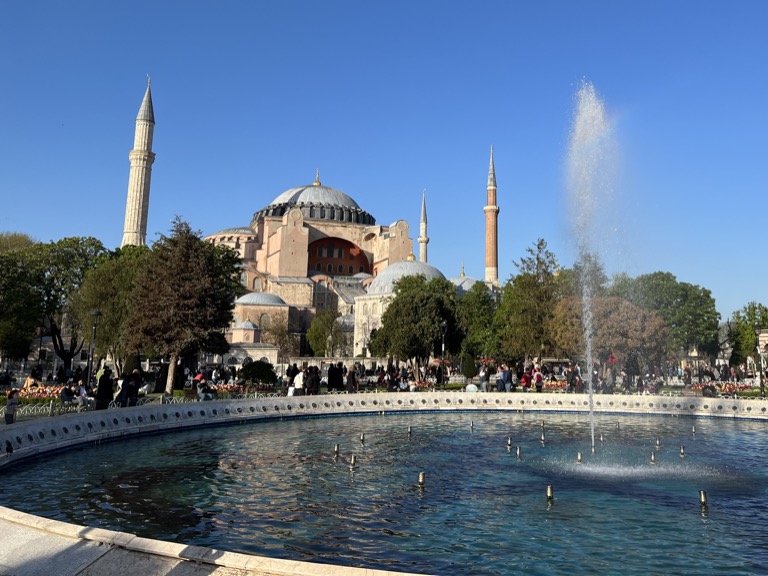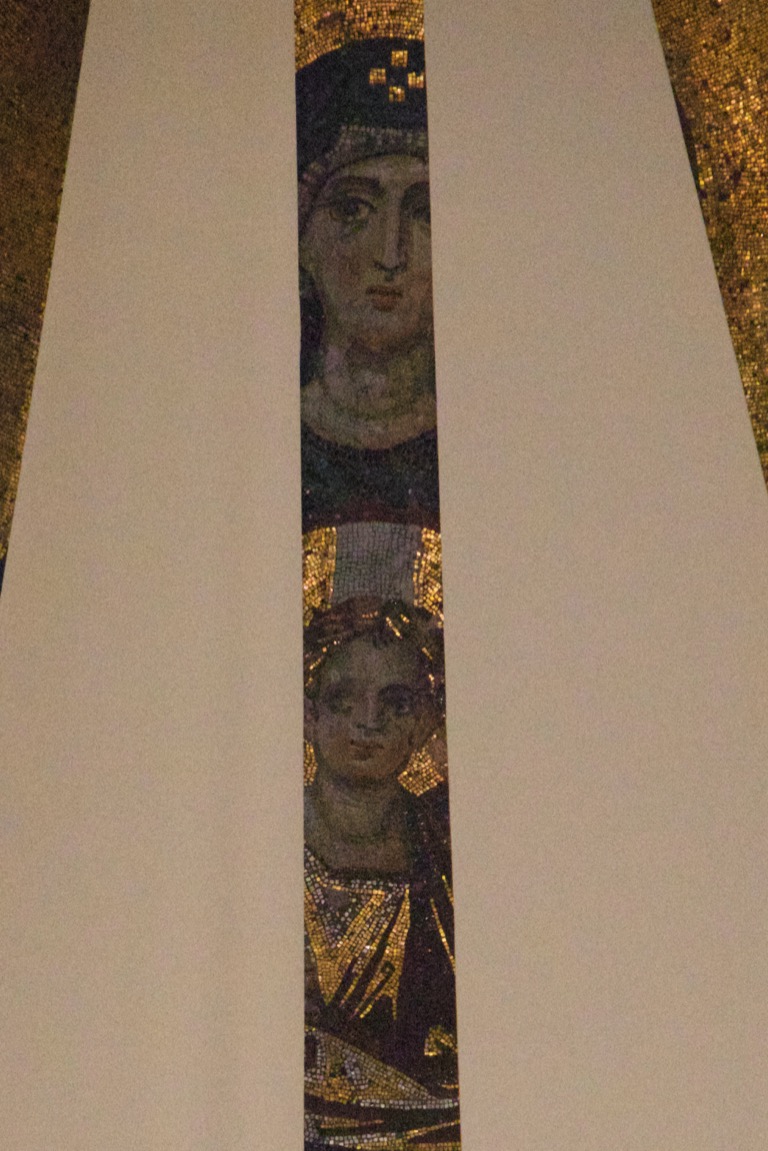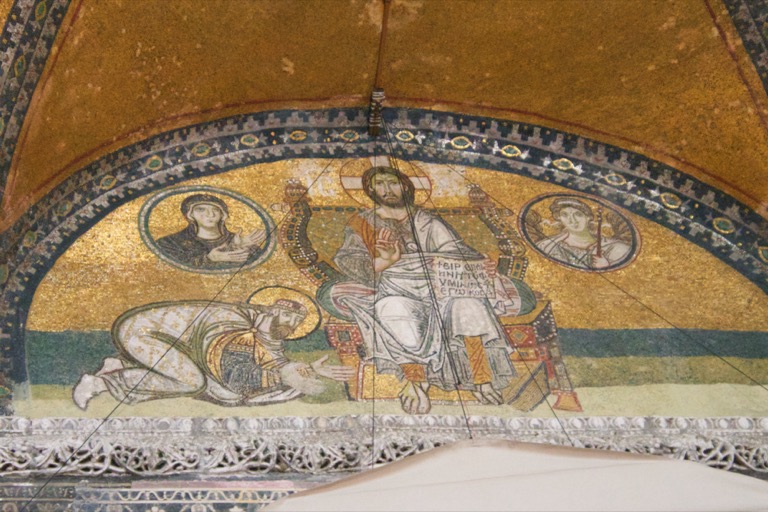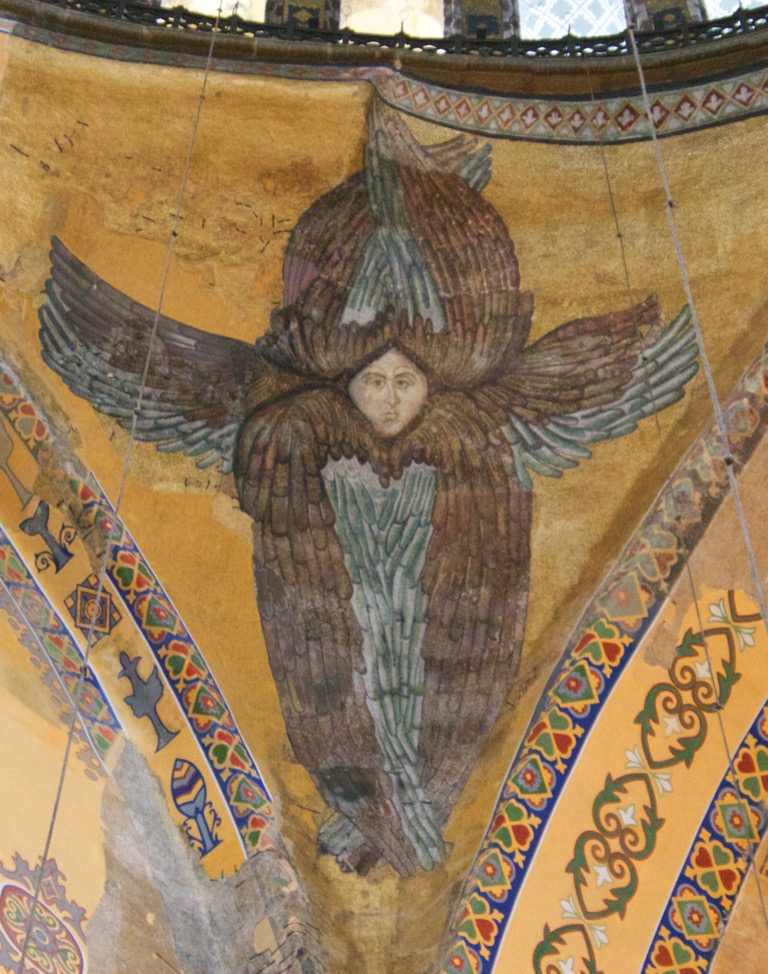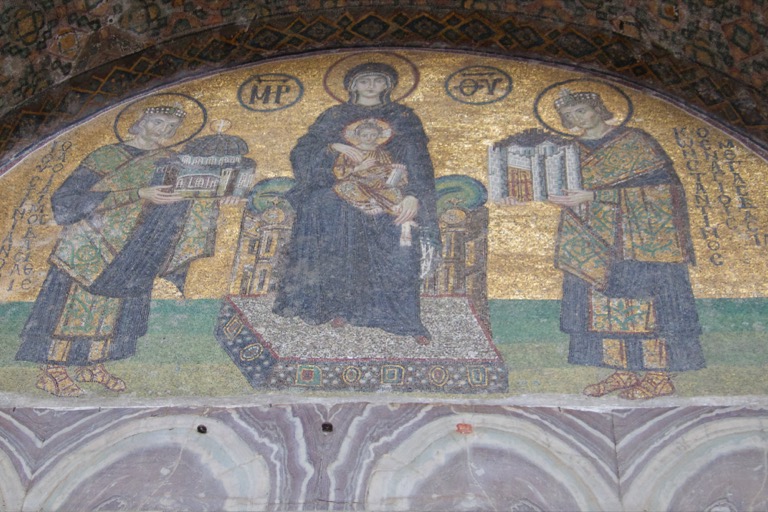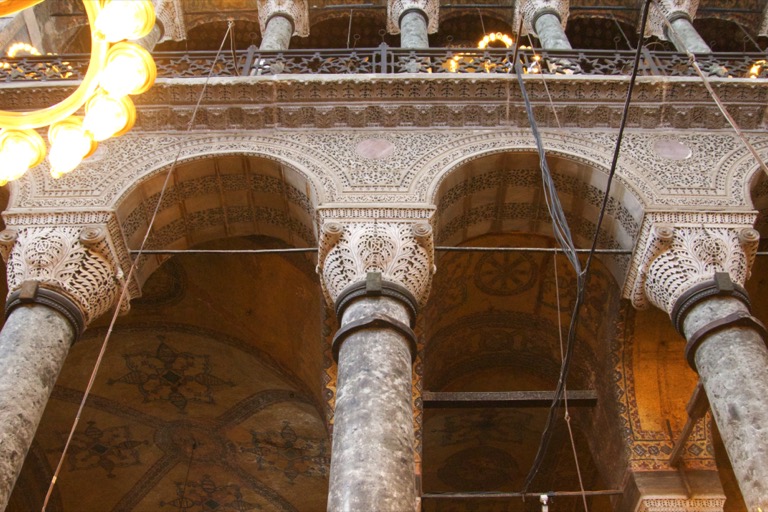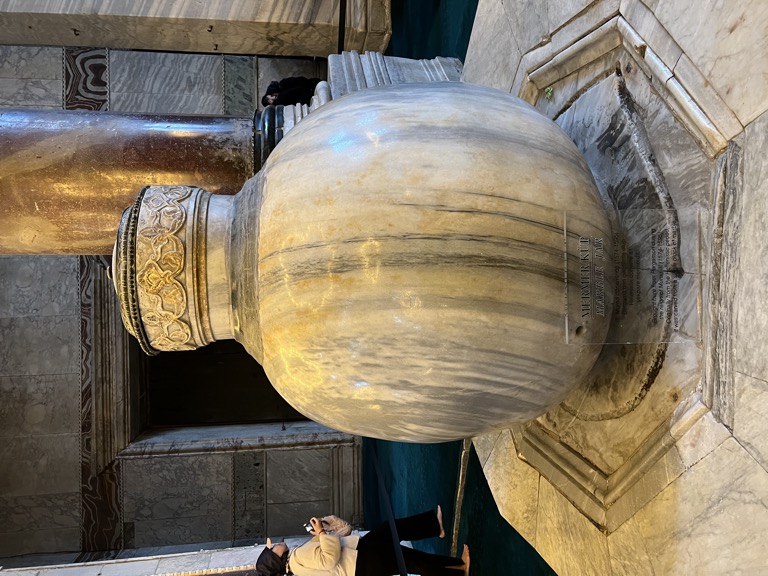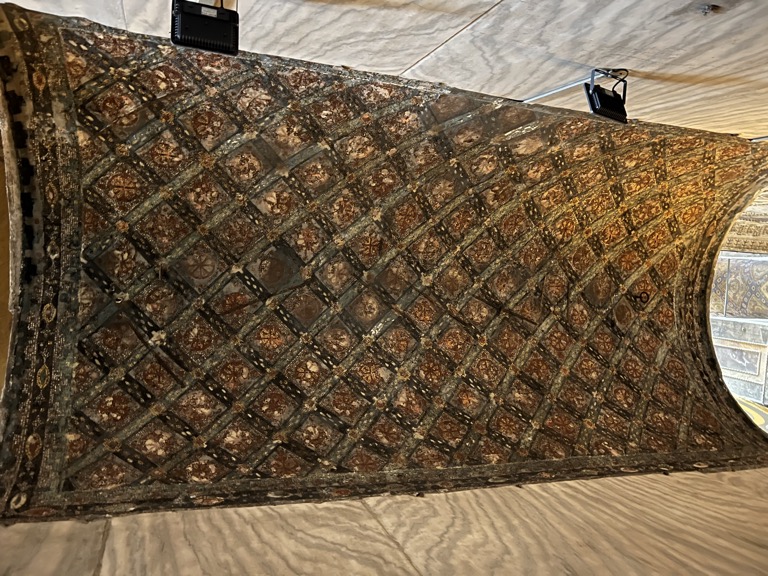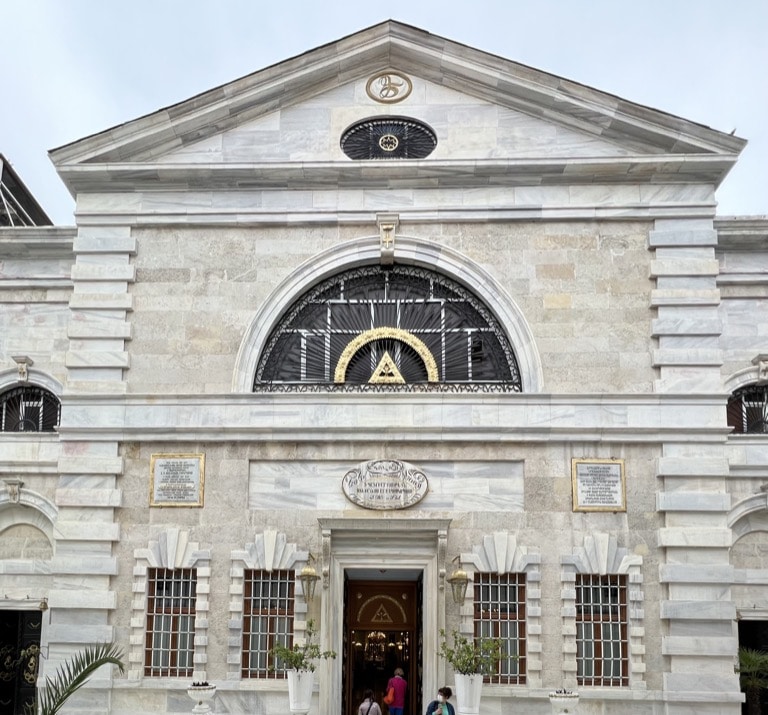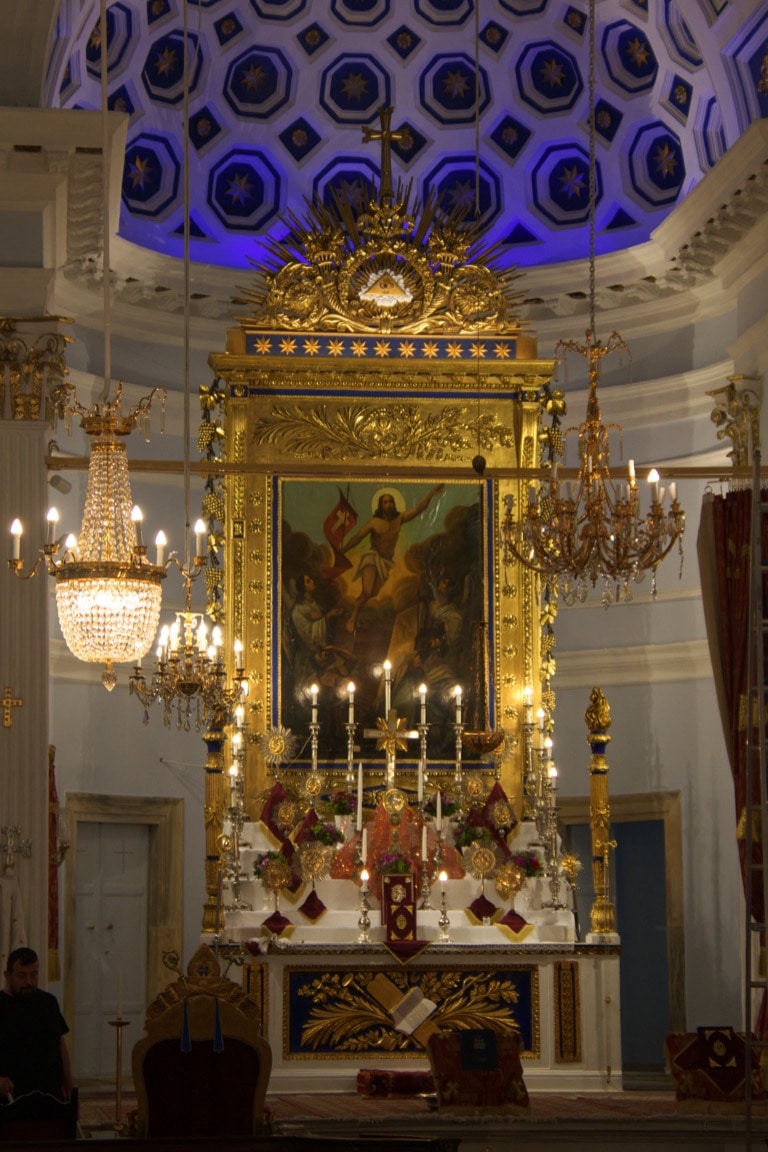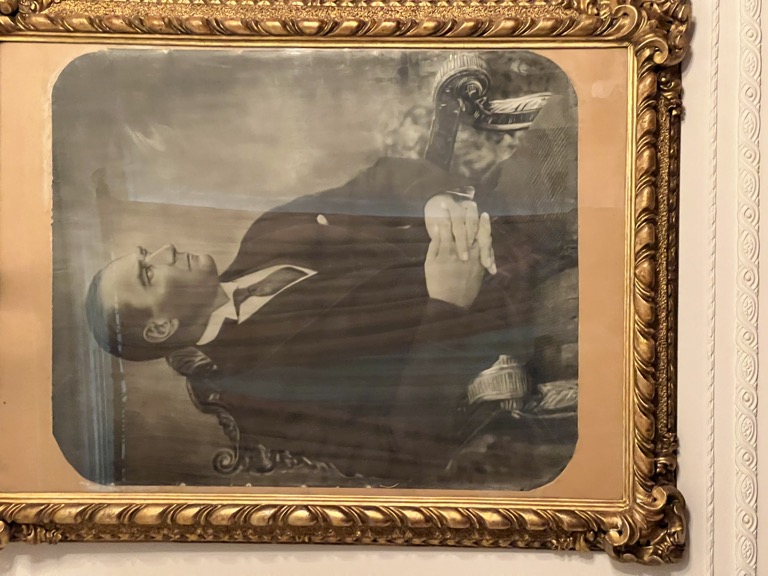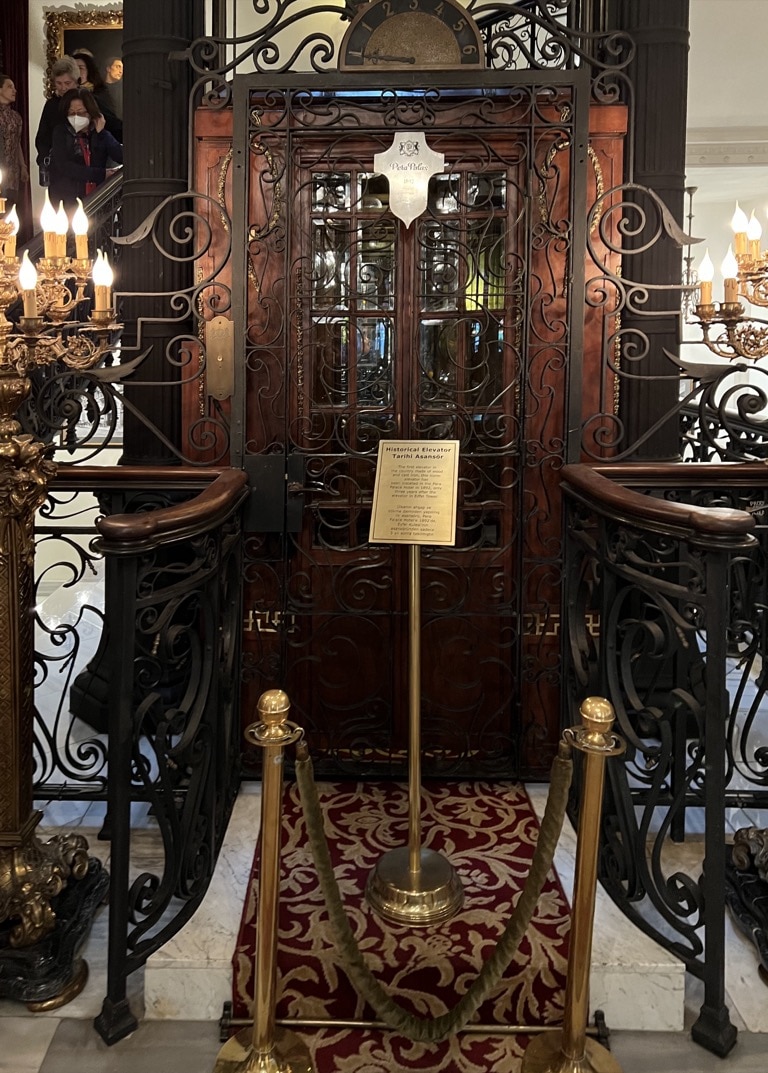on
Hagia Sophia
Today we visit the Hippodrome, Hagia Sophia, and the Taksim square area. These are part of the historic Istanbul UNESCO World Heritage Site.
The Hippodrome of Constantinople no longer really exists. You visit the area where it was, now called Sultanahmet Square. The Roman emperors collected statues and other things from his empire to display along the center of the hippodrome racetrack. There is the upper portion of an obelisk from Thutmose III from the temple of Karnak in Luxor, Egypt here. The ground level was 15 ft lower at the time, so these artifacts now are in pits.
There is also the lower portion of the bronze serpent sculpture from Delphi.
Hagia Sophia opens at 10am, we waited a bit outside in a long line, but it moved fairly quickly when it opened. The building we see is the third church built on the site.
There are some ruins of the second church.
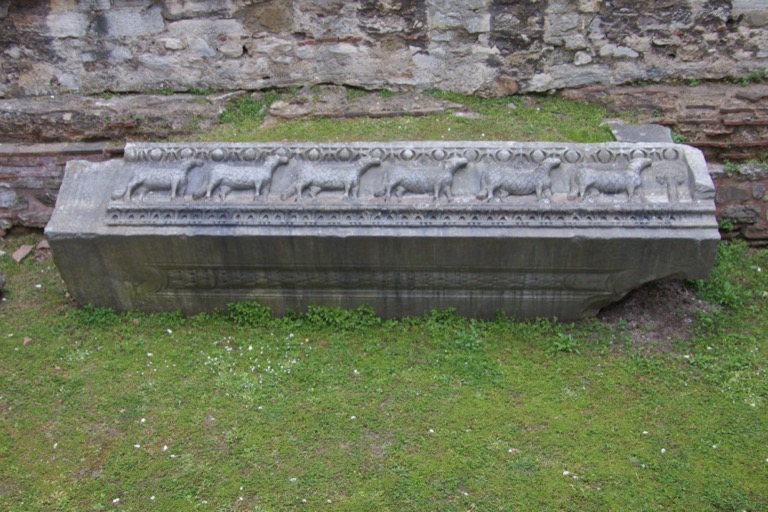
Hagia Sophia was a museum until a couple of years ago when the Turkish president decided it should be a mosque again. So you now have to take off your shoes, our guide brought bags to carry the shoes, as a prior group had some custom orthotic shoes stolen.
Hagia Sophia is huge inside, it’s hard to describe how big it is. It was constructed between 532 and 537 AD and was the largest interior space in the world.
When it was a museum, the conservators had uncovered some of the Christian mosaics that had been plastered over. Now they have banners covering them.
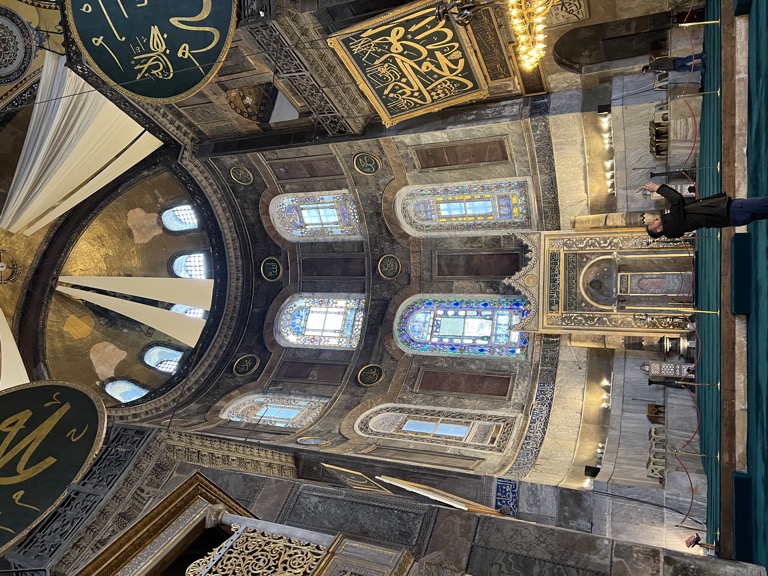
I did zoom in and try to get the faces between the banners.
The mosaic at the exit was not covered, it depicts Constantine presenting the city of Constantinople and Justinian presenting Hagia Sophia to Mary, mother of Jesus.
The floor was covered with carpeting, but the one fancy spot was left visible. This is where a new emperor would be crowned. Only he was allowed to be on the big circle. Other officials were in the other circles.
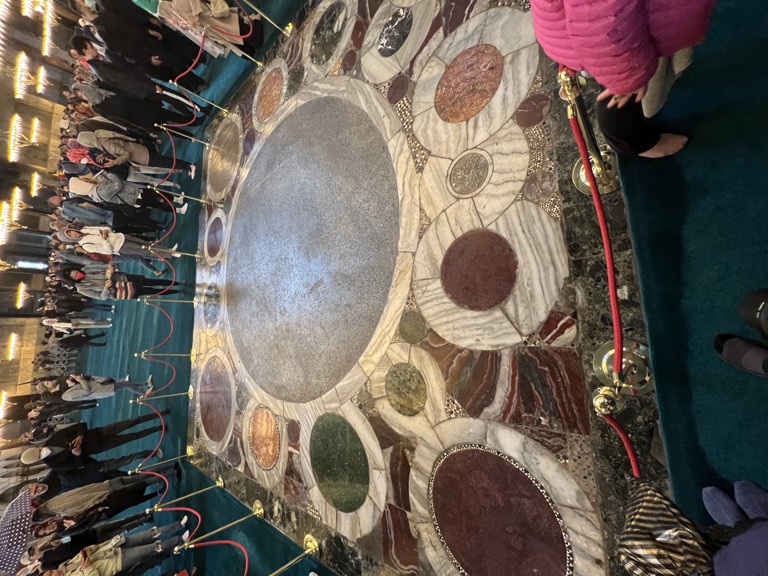
The stone carving is also exquisite. Here are some capitals on the columns.
There was a huge marble jar that was found in Pergamon, an old Greek city that we will visit later, in the 15th century.
The mosaics above the alter where likely added later, after the Iconoclasm period that destroyed depictions of people and animals, but this geometric pattern has been dated to the original construction.
We then walked over to a nearby restaurant for a visit with a young activist for women’s rights in Turkey. She told us how women didn’t need to organize and advocate for themselves in the early years of the Turkish Republic, as many of the laws were copied from Switzerland, and the vote for women was already included in those laws.
But in the past twenty years under this conservative government, they have been losing rights.
After the talk, we took a bus over to Taksim square for lunch and then a walk down a street with art Nuevo style buildings.
As we walked by an open door, our guide quickly asked the gentleman standing by it if we could come in and look around. The door lead to a courtyard that housed an Armenian Catholic Church. They let us come see the church. It’s not always open.
We also encountered a demonstration of some college aged kids supporting the Ukrainian people.
We ended at the Pera Palace Hotel which had a small exhibit of the room that Ataturk stayed at when in Istanbul after founding the republic and setting the capital in Ankara.
It also has a vintage elevator. The hotel was also featured in a new Netflix show.
